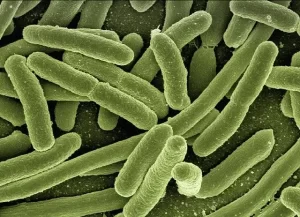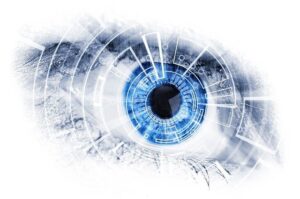Oncogenes are genes that can cause cancer
- Did Cloud Seeding Unleash a Deluge in Dubai?
- Scientists Identify Gut Bacteria and Metabolites that Lower Diabetes Risk
- OpenAI’s Model Matches Doctors in Assessing Eye Conditions
- UK: A Smoke-Free Generation by Banning Sales to Those Born After 2009
- Deadly Mutation: A New Monkeypox Variant Emerges in the DRC
- EPA Announces First-Ever Regulation for “Forever Chemicals” in Drinking Water
Oncogenes are genes that can cause cancer
- Red Yeast Rice Scare Grips Japan: Over 114 Hospitalized and 5 Deaths
- Long COVID Brain Fog: Blood-Brain Barrier Damage and Persistent Inflammation
- FDA has mandated a top-level black box warning for all marketed CAR-T therapies
- Can people with high blood pressure eat peanuts?
- What is the difference between dopamine and dobutamine?
- What is the difference between Atorvastatin and Rosuvastatin?
- How long can the patient live after heart stent surgery?
Oncogenes are genes that can cause cancer. The World Health Organization defines cancer as: Cancer is a genetic disease, which includes a large group of diseases that can affect all parts of the body.
Oncogenes are genes that can cause cancer. Oncogenes usually encode proteins that control cell growth and survival, but mutations in these genes may cause oncogenes to not work properly, and these genes can also be activated and inactivated.
This may lead to uncontrolled growth of cells, which can lead to the occurrence of cancer. Let’s give an example of an oncogene, such as BRAF, which encodes a protein involved in cell growth and survival.
In cancers, most mutations in this gene will cause cells to continue to grow. Mutations in oncogenes may be inherited from parents (germline mutations), or they may be caused by certain substances in the environment (systemic mutations)
The World Health Organization defines cancer as: Cancer is a genetic disease, which includes a large group of diseases that can affect all parts of the body.
An important feature of cancer is that it can quickly produce abnormally spreading cells (i.e. cancer cells); these cells are not controlled by normal boundaries and can invade other parts (i.e. metastases), and the latter is the main cause of death in cancer patients.
Oncogene
Since the abnormality of tumor cells is caused by its gene mutation, the oncogene should have the following characteristics:
1) Genes have mutations during the development of cancer;
2) Gene mutations cause abnormal cell status, such as changes in cell shape, uncontrolled cell growth, etc.;
3) Unlike the exogenous nature of the virus, the oncogene should be endogenous in the cell.
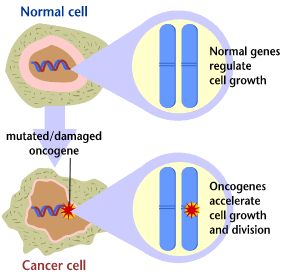
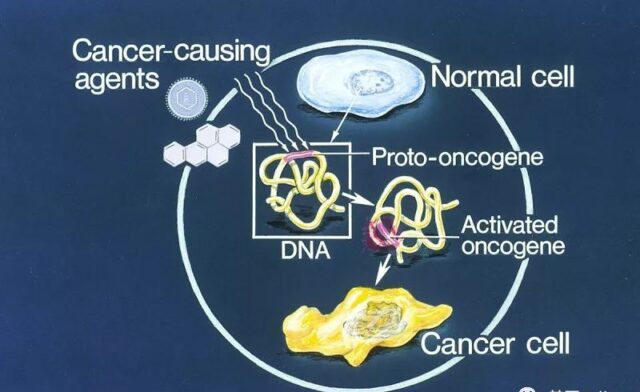
Tumor suppressor gene
The development of tumors is a multi-level process. Normal cells have to go through a series of intermediate transitional stages before forming malignant tumors, and a mutation of an oncogene is generally not enough to cause such changes. So people have established a multipolar tumorigenesis model.
It is believed that a tumor cell has two or more mutated oncogenes, which are activated at different stages of tumor development, and at the same time, people realize the other factors in tumorigenesis. An important class of mutation targets are tumor suppressor genes (these genes prevent cancer from occurring).
The inactivation of tumor suppressor genes and the activation of oncogenes together lead to the cancerous transformation of cells, and ultimately the formation of tumors.
If you compare a normal cell to a car driving towards a tumor, the oncogene is equivalent to the accelerator, and the tumor suppressor gene is equivalent to the brake.
When the cancer-causing gene mutation is activated, the cells accelerate to become cancerous, similar to a car with a gas pedal; when the tumor suppressor gene mutation is inactivated, it cannot inhibit cell canceration, which is similar to a car with a brake failure.
The activation of oncogenes and the inactivation of tumor suppressor genes are similar to a car with accelerator and brake failure. As a result, it quickly drives toward the end of cancer.
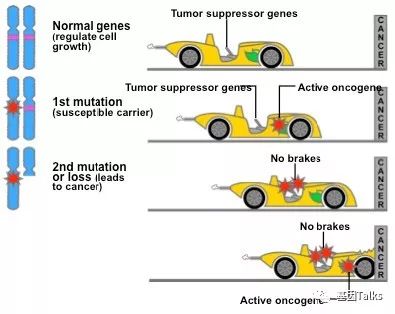
DNA damage repair genes
As mentioned earlier, abnormalities in tumor cells are caused by genetic mutations. In fact, in one generation of cells, the probability of mutation is very low; in addition, cell cancer requires multiple mutations such as oncogenes and tumor suppressor genes, so the probability of tumor occurrence is even lower.
Cancer Two Strike Theory
A hereditary tumor is because it has a mutated gene, which is equivalent to reducing an obstacle to tumor occurrence, thus greatly increasing the probability of tumor occurrence. In addition, there is another way to accelerate the process of tumorigenesis: that is, increase the frequency of mutations!
Xeroderma pigmentosum (XP) is a disease that increases the frequency of mutations to increase the probability of cancer. XP patients are very sensitive to ultraviolet radiation and can easily cause skin cancer in the irradiated area.
The reason is that UV radiation can cause DNA damage to skin cells. In normal people, this type of damage can be repaired by a type of DNA repair protein; and XP patients have defects in this type of protein, so they cannot repair the DNA damage caused by UV radiation. , Thereby greatly increasing the frequency of cell mutations.
As a result, people discovered another type of genes related to tumor formation: DNA damage repair genes. DNA damage repair genes are theoretically neither oncogenes nor tumor suppressor genes.
They are another type of tumor-related genes, but some DDR genes are sometimes classified as tumor suppressor genes, such as BRCA1/2, TP53, and MMR. Etc., some DDR genes are not tumor suppressor genes.
The normal DNA damage repair system can repair a variety of DNA damages, including those caused by mutagens and carcinogens in the environment. If these gene mutations cause loss of function, DNA repair will not proceed normally, and the damaged DNA will increase the mutation rate exponentially when it is replicated, causing the accumulation of oncogene or tumor suppressor gene mutations, thereby accelerating tumor formation.
The formation of tumors is mainly related to three types of genes
1. Oncogenes. The functions of these genes are mostly related to cell growth signal pathways. Mutations cause their protein products to be inactivated or activated, which stimulates cells to grow uncontrollably and become cancerous;
2. Tumor suppressor genes. The function of these genes is usually to maintain the accuracy of replication in the cell cycle. It usually requires mutations in both alleles to lose the inhibition of cancer;
3. DNA damage repair genes. These genes can repair a variety of DNA damages. When they are mutated, they will lose the repair function of DNA, which greatly increases the mutation rate of genes including oncogenes and tumor suppressor genes, thereby accelerating cancer. form. (Partially the same as tumor suppressor gene).
(source:internet, reference only)
Disclaimer of medicaltrend.org

